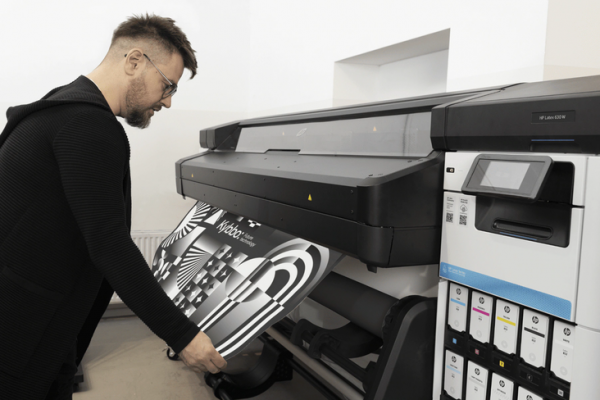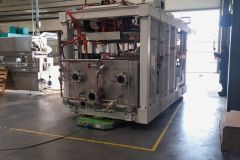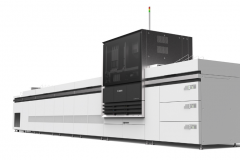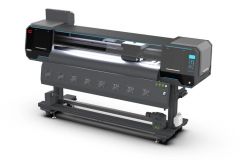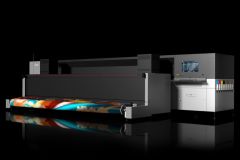HP launches a new series of large-format printers, the HP Latex 630. This 1.63-m-wide (64-inch) Latex series works with HP's fourth-generation aqueous inks and comes in two models, HP Latex 630 and HP Latex 630 W, which features white ink.
The HP series Latex 630, "the best in technology Latex
This new series integrates " allowing "il" says Daniel Martinez, General Manager of HP Grand Format, in a press release.
Equipped with CMYK channels plus light cyan, light magenta, HP Latex optimizer, HP Latex protective coating and white for the HP Latex 630 W, this series reaches 14 m 2 /h in standard mode.
Printhead cleaning is automatic. A 10 GB memory allows quick access to jobs to be reprinted. According to HP, the new printhead architecture is capable of producing sharper small text.
The HP Latex 630 series produces banners, custom apparel, outdoor and indoor signage, floor and vehicle graphics, posters, labels, film and paper for lightboxes, POP displays, window graphics and decals.
Like the rest of the HP Latex range, the HP Latex 630 series uses water-based inks and is UL Ecologo and Epeat environmentally certified.
It uses the latest generation of HP Latex inks. These Gen 4 inks offer a wider color gamut and higher pigment loading. They require less energy to dry, and include a protective coating (Overcoat) that reduces the need for ink.
The HP Latex 630 W printer, for low-maintenance whites
In particular, the HP Latex 630 W printer delivers vibrant colors on a wide range of substrates, including dark and transparent ones.
The machine is equipped with an automatic recirculation system for the white ink: the ink circulates continuously and does not settle. When not in use, the white printhead is removed from the carriage and stored in an off-line rotation chamber, preventing ink waste and printhead clogging.
White printing is available in several densities to obtain different levels of opacity.
